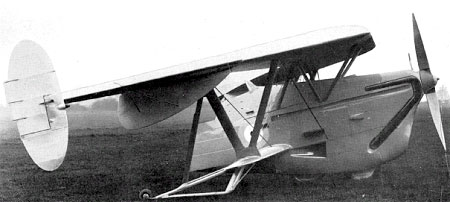 |
Westland Pterodactyl V1932 |  |
| TAILLESS FIGHTER SESQUIPLANE | Virtual Aircraft Museum / United Kingdom / Westland |
 |
TYPE.-Two-seat tailless fighter sesquiplane. The fourth Pterodactyl, and third and final Westland-Hill production, was the Pterodactyl Mk. V, which made its appearance in 1932. This machine was an impressive two-seater fighter, powered with a 600hp Rolls Royce Goshawk engine, and differed noticeably from previous Pterodactyl designs. The most striking departure was the tractor arrangement of the engine, as opposed to the earlier ''pusher" types, while the wings were in sesquiplane form, with the upper plane raised above the fuselage. The military advantages foreshadowed in the first Pterodactyl were brought to practical form in the Mark V, the rear cockpit, immediately aft of the pilot, being fitted with an electrically-operated twin-gun turret. The unobstructed field of fire from this position has only been equalled by the tail gun-turrets of modern multi-engined bombers and, with a performance equal to that of its contemporary, the Hawker Hart, the Pterodactyl V was an ideal fighter type. Test flights, by Mr. H. J. Penrose, showed that with this example the tailless type had attained a degree of performance, stability and control equal to the conventional aeroplane. It was demonstrated to be fully aerobatic and even capable of inverted flight, but, although so successful as an experimental machine, certain secondary problems rendered a degree of re-design necessary for production. A.H.Lukins "The Book of Westland Aircraft", 1943
|  COMPANY PROFILE | |||||||||||||||||||||||||||||||||||||||||||||||||||||||
 |

|


